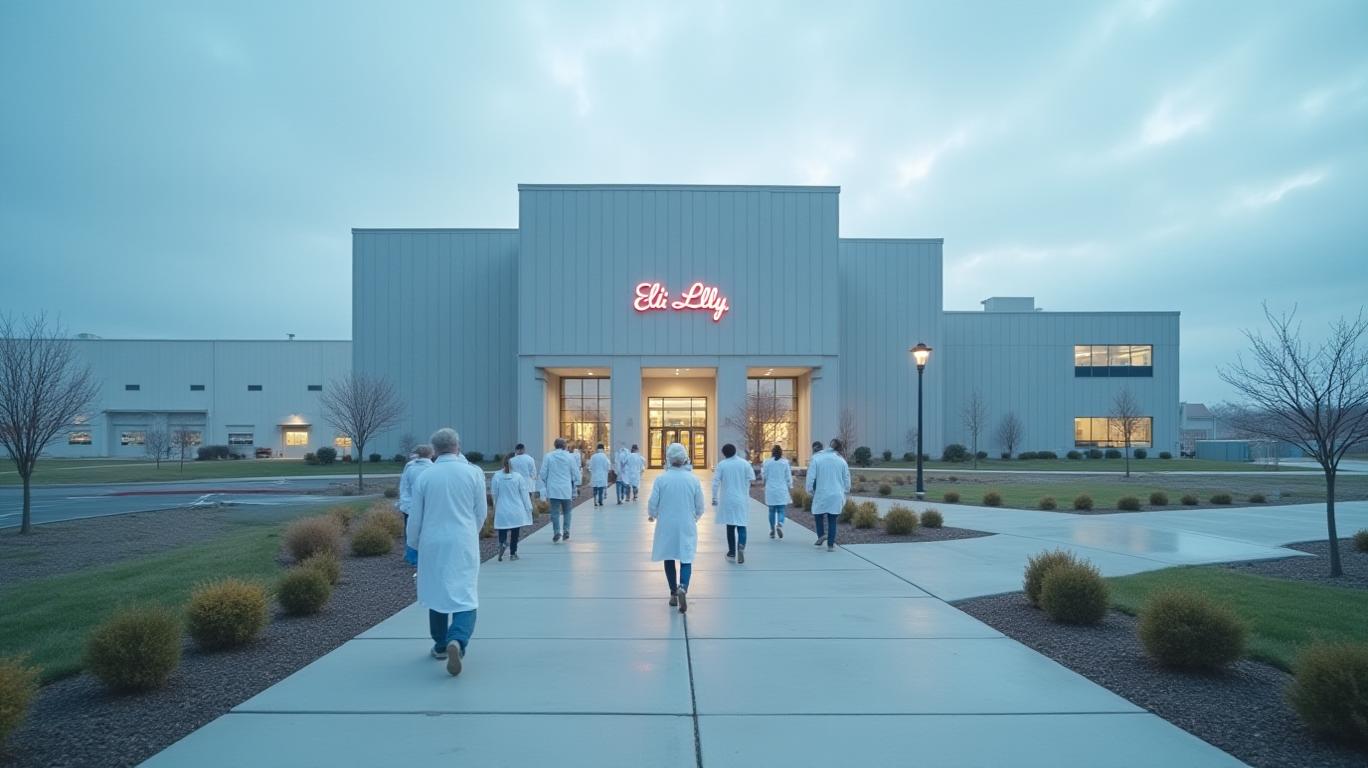Eli Lilly's Tariff Talk: A Delicate Balancing Act Between Reshoring and Innovation
Eli Lilly’s (LLY) executives have framed their 2025 financial outlook as a story of cautious optimism, despite navigating a minefield of trade tensions and regulatory uncertainty. While CFO Lucas Montarce insists current tariffs pose a “limited” threat to earnings, CEO David Ricks warns of subtler risks: the potential erosion of U.S. pharmaceutical innovation and the unintended consequences of protectionist policies. This tension between near-term resilience and long-term viability makes Lilly’s strategy a microcosm of broader challenges in global drug manufacturing.
The CFO’s Calculus: Tariffs Absorbed, but Risks Linger
Montarce’s comments reflect a deliberate effort to reassure investors. “The impact of potential tariffs is absorbed within our 2025 guidance,” he stated, signaling no immediate need to revise forecasts. Yet this confidence is tempered by the CFO’s emphasis on “close monitoring.” The company has not yet baked specific tariff costs into its projections, suggesting a wait-and-see approach to legislative developments.
This measured stance aligns with Lilly’s Q1 2024 results, which beat revenue expectations ($12.73B vs. $12.67B estimates). However, the 11% post-earnings stock drop underscores investor wariness about tariff uncertainty and competition in the GLP-1 market—where rival products like Zepbound (from Zealand Pharma) threaten Lilly’s Wegovy dominance.
Ricks’ Reshoring Play: Manufacturing as a Hedge Against Tariffs
The CEO’s focus shifts to supply chain resilience. Ricks acknowledges U.S. national security concerns over reliance on foreign-made generics but argues the “threat of tariffs has already worked.” He points to Lilly’s $27B U.S. manufacturing investment since 2020—a move mirrored by peers like Johnson & Johnson ($55B) and Roche ($50B).

This reshoring boom, Ricks insists, renders new tariffs unnecessary. Yet the CEO’s plea for the Trump administration to “declare victory and move on” hints at industry fatigue. The National Security Drug Tariffs Act, proposing 10% tariffs on generic imports, remains stalled in Congress. Without resolution, companies face a “wait-and-see” limbo that could inflate costs for rivals like Johnson & Johnson, which already reported $400M in tariff expenses for 2025.
The Hidden Cost: R&D Cuts and Innovation at Risk
The most alarming revelation comes from Ricks’ warning that tariff-driven cost pressures, combined with global price caps, could force a 3% R&D cut in 2025—a reduction following a 5% trim in 2023–2024. With R&D accounting for 15–20% of annual spending, these cuts could delay breakthroughs in oncology and neurodegenerative diseases.
The stakes are existential: the U.S. dominates 70% of global pharmaceutical innovation, largely due to high R&D investment. Analysts caution that sustained cuts could cede this leadership to regions with lower tax burdens—Ricks’ preferred solution. He advocates for a 15% U.S. tax rate on domestic drug production, arguing that punitive tariffs are “a sledgehammer” when tax incentives would better retain manufacturing.
Market Realities: GLP-1 Juggernaut vs. Policy Headwinds
Lilly’s near-term strength lies in its GLP-1 franchise, where Ricks dismisses PBM exclusion tactics (e.g., CVS excluding Zepbound) as distractions. “We’re focused on next-generation drugs,” he said, emphasizing Lilly’s lead in GLP-1 prescriptions. Yet the 11% stock drop post-earnings reveals investor skepticism about competition and pricing battles.
The CEO’s broader concern—maintaining U.S. R&D preeminence—is harder to quantify but critical. A 3% R&D cut may seem minor, but it follows years of austerity in an industry where drug development costs average $2.6B per approved product.
Conclusion: A Precarious Equilibrium
Lilly’s 2025 outlook hinges on two competing narratives. On one hand, its reshoring investments and robust GLP-1 sales position it to weather near-term tariff impacts. On the other, R&D cuts and legislative gridlock threaten its innovation edge.
The data is stark:
- Supply Chain: 80% of APIs still imported, but $50B+ industry investments aim to reduce reliance.
- Innovation: U.S. accounts for 70% of global pharma R&D, but tax rates (21% corporate rate vs. 12.5% in Ireland) risk reversing this.
- Market Dynamics: GLP-1 sales grew 20% YoY in 2023, but competition could erode margins without new breakthroughs.
Investors should monitor two key metrics: legislative progress on tariffs and Lilly’s R&D trajectory. If Congress defers to industry-led reshoring, Lilly’s stock could rebound. If tariffs materialize or R&D budgets shrink further, the 11% post-earnings drop may preview a longer downturn. For now, Lilly’s executives have bought time—but the clock is ticking on their bet that tariffs stay hypothetical, not material.

Comments
No comments yet